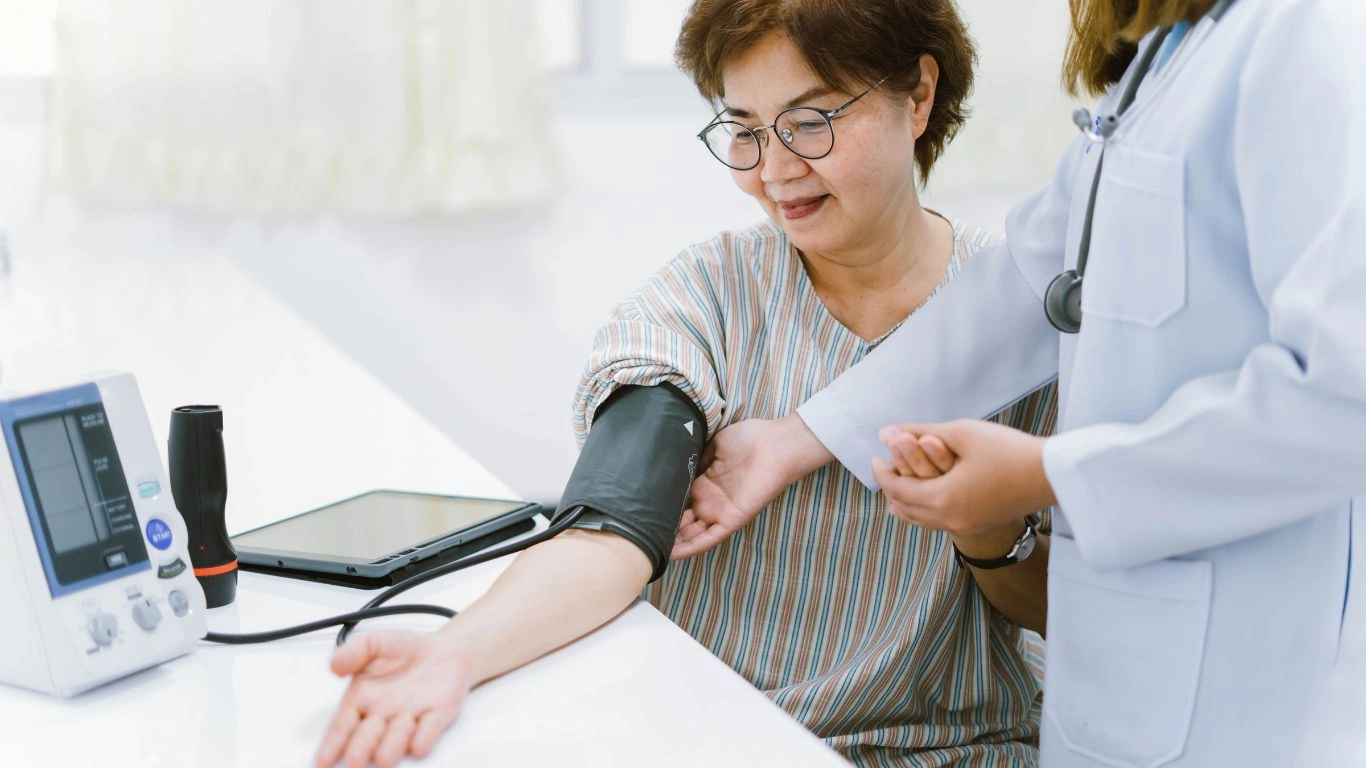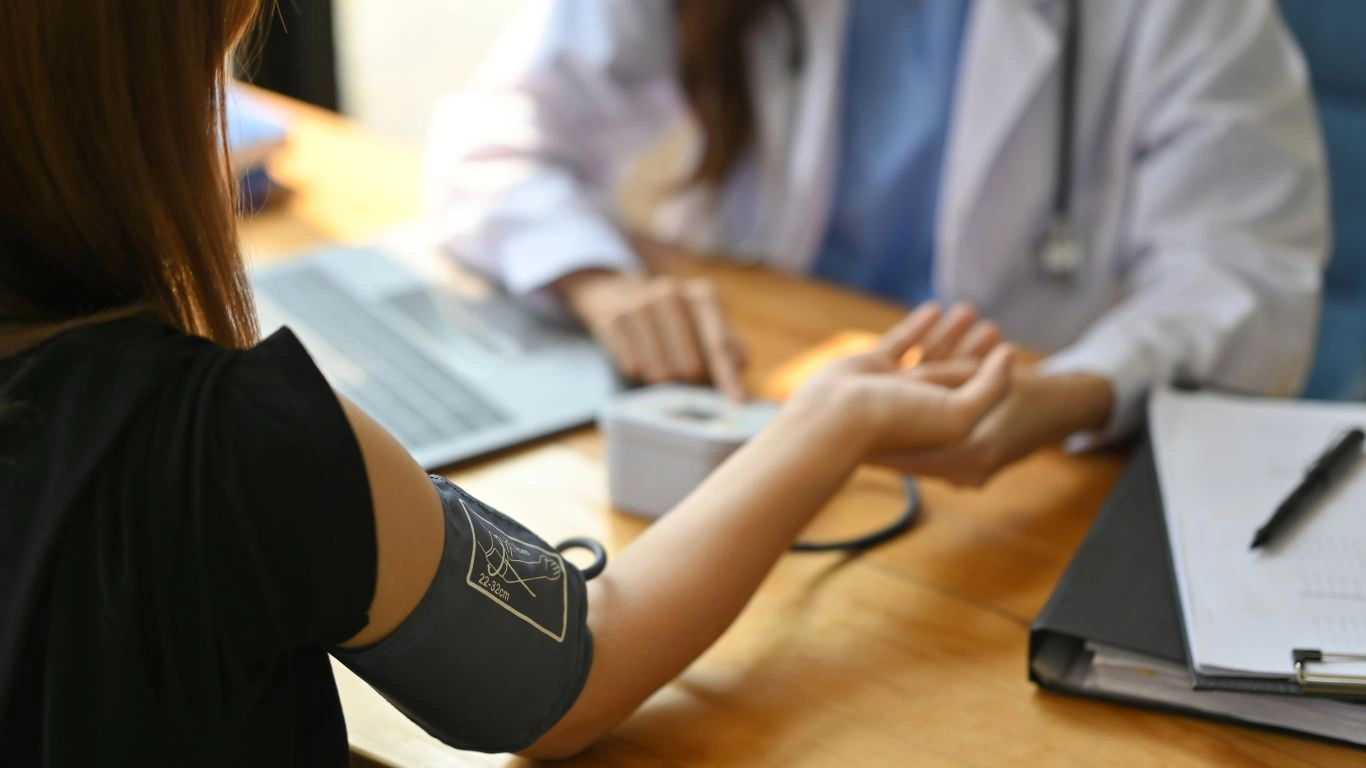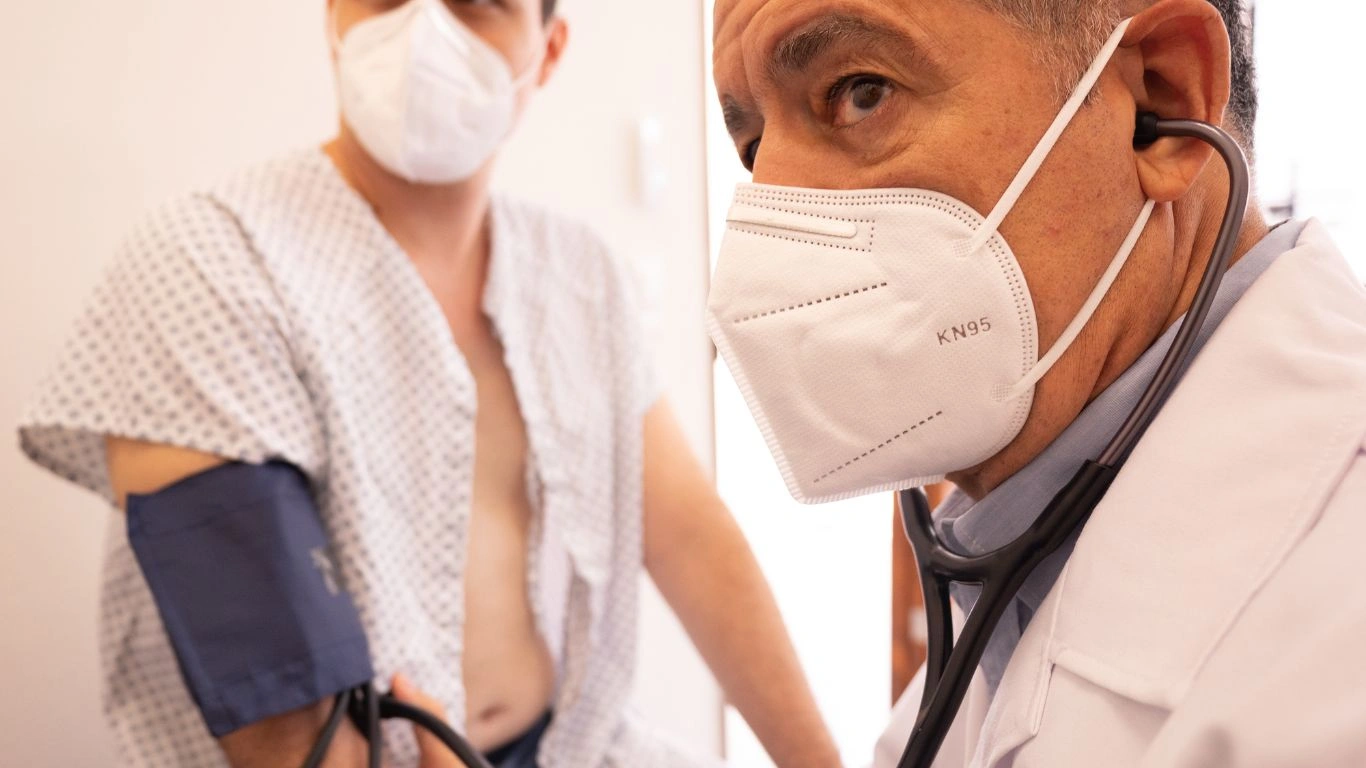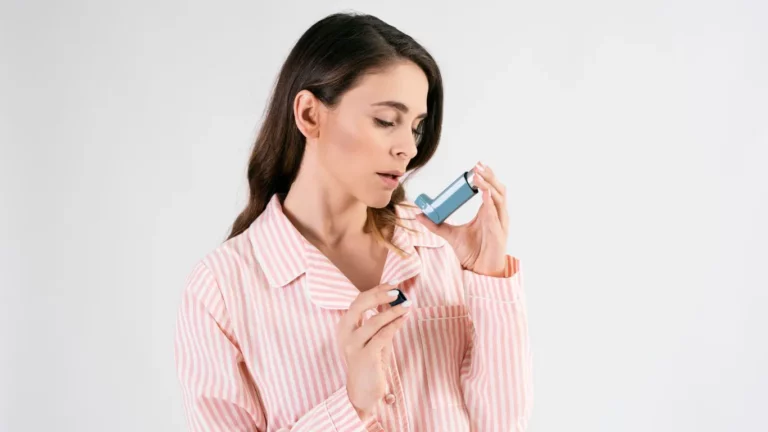How to Read Food Labels for Hypertension and Control BP Naturally
If you’ve ever been diagnosed with hypertension or are trying to keep your blood pressure in check, you probably already know how important diet is. But here’s the kicker: knowing how to read food labels for hypertension can make a huge difference in managing your condition. As an internal medicine physician specializing in hypertension management, I’ve seen countless patients overlook the hidden sodium and unhealthy ingredients lurking in their everyday meals. Trust me, it’s not just about cutting salt blindly — it’s about understanding what’s really on the label so you can make smarter choices without feeling deprived.
Why Reading Food Labels Matters for Hypertension
Many people assume that “low salt” means safe for blood pressure, but food labels tell a deeper story. The way manufacturers list ingredients and nutritional values can be confusing if you don’t know what to look for. I often find that patients who take a few extra minutes to decode these labels end up with better blood pressure control and fewer medication adjustments. The reason? They avoid hidden sodium, unhealthy fats, and additives that silently raise blood pressure or trigger inflammation.
Understanding food labels empowers you to take charge of your health. When you’re able to spot the sneaky salt in processed foods, it’s easier to pick fresher, healthier options. Plus, the confidence of knowing what you’re putting into your body reduces anxiety around eating, which—believe it or not—can itself help keep your blood pressure down.
Spotting Sodium: The #1 Culprit
Sodium isn’t just that tiny “salt shaker” warning you might expect. It comes in many forms and disguises on food labels. Here’s a quick primer on what to watch for:
- Look for “Sodium” in the Nutrition Facts: This is the total amount of sodium per serving. For hypertension, aiming for less than 140 mg per serving is a good rule of thumb, but always factor in your entire daily intake.
- Check the Ingredients List: Sodium can be listed as sodium chloride (table salt), sodium nitrate, monosodium glutamate (MSG), baking soda (sodium bicarbonate), or sodium benzoate. These all contribute to your total sodium load.
- Beware of “Low Sodium” vs. “Reduced Sodium”: “Low sodium” means 140 mg or less per serving, but “reduced sodium” just means it has less sodium than the regular version — which could still be high.
In my clinic, I encourage patients to always have a look beyond the front of the package. Sometimes products labeled as “heart-healthy” still pack quite a bit of sodium that can sneakily add up.
Understanding Serving Sizes: The Hidden Trap
Ever noticed how tiny the serving size is on some labels? That’s a classic trick. A package might say 140 mg of sodium per serving, but if the package contains two or three servings, you’re actually consuming much more than you think. When I explain this to my patients, it often comes as a surprise.
Always compare the serving size listed on the label to how much you actually eat. If you eat double the serving, double the sodium. Simple as that.

Beyond Sodium: Other Label Info to Watch
Sodium isn’t the only thing to keep an eye on. Some other label components can influence blood pressure or overall cardiovascular health:
- Added Sugars: Excess sugar, especially from sweetened beverages or processed snacks, can worsen hypertension through weight gain and metabolic changes.
- Saturated and Trans Fats: These fats can contribute to artery stiffness and inflammation, making it harder to control blood pressure.
- Potassium Content: Potassium helps balance sodium’s effects and relax blood vessels. Some labels will highlight potassium, which is a great plus.

Using Food Labels to Build a Heart-Healthy Grocery List
With all this info in hand, you might feel overwhelmed at first — but here’s my personal tip: focus on whole foods as much as possible. Fresh fruits, vegetables, lean proteins, and whole grains usually don’t come with complicated labels. When you do buy packaged foods, keep your eyes peeled for those key numbers.
In my practice, I recommend patients create a mental checklist or even jot down “go-to” products that meet these criteria:
- Less than 140 mg sodium per serving
- Minimal or no added sugars
- Low saturated and no trans fats
- Includes some potassium
This way, grocery shopping becomes less of a guessing game and more about confidently picking what supports your blood pressure goals.

So, the next time you’re at the store, remember that mastering how to read food labels for hypertension isn’t just a chore — it’s a powerful tool to take control of your health. And if you ever feel stuck or confused, don’t hesitate to reach out to your healthcare provider for guidance tailored just for you.
Decoding the Ingredients List: What You Should Know
When I first started advising patients on managing hypertension through diet, I noticed many of them only glanced at the nutrition facts and ignored the ingredients list entirely. But the truth is, the ingredients list often tells you more than just the numbers. It reveals what’s actually inside that box, can, or bag—and sometimes, the scary stuff hides there.
One of the first rules I share is this: ingredients are listed in order of quantity, from the most to the least. So if salt or sodium-related compounds show up in the first few ingredients, it’s a red flag that the product might not be great for blood pressure.
- Watch out for multiple sodium sources: It’s common for food to contain several forms of sodium, like sodium phosphate, sodium benzoate, or even sea salt. Individually, they might seem small, but combined, they can push your sodium intake way over the limit.
- Beware of preservatives and flavor enhancers: Ingredients like monosodium glutamate (MSG) or sodium nitrate not only add sodium but can also cause fluid retention and raise blood pressure in sensitive individuals.
- Hidden sugars can sneak in here, too: Look for terms like dextrose, maltose, or high-fructose corn syrup. Excess sugar intake can indirectly worsen hypertension by promoting weight gain and insulin resistance.
From my clinical experience, patients who learn to carefully scan ingredients tend to become more mindful eaters overall. It’s like developing a sixth sense for foods that could sabotage their blood pressure efforts.
Reading Between the Lines: Marketing Claims vs. Reality
One thing that really grinds my gears as a physician is how misleading some packaging can be. You’ll see claims like “heart-healthy,” “natural,” or “low fat,” and it makes you think the product is a safe bet. But these buzzwords can sometimes distract from the actual content that matters most to hypertension management.
Here are a few tips from my years of practice to help you separate marketing fluff from real nutritional value:
- “Low fat” doesn’t always mean low sodium: Many “low fat” or “fat-free” products compensate for flavor with extra salt, so they might not be the best choice if you’re watching your blood pressure.
- “Natural” is not regulated: The term “natural” isn’t tightly controlled, so it doesn’t guarantee low sodium or absence of additives.
- “No added salt” still may contain sodium: Some foods naturally contain sodium, so even if no salt is added, the total sodium content could be significant.
I always encourage my patients to trust the numbers and ingredients more than the flashy front labels. It’s about being a smart, informed consumer—not falling for clever packaging.

Now, I know it’s easier to read labels when you’re in a store holding the package in your hands. But what about restaurants, takeout, or deli counters? This is where many patients feel lost, especially if they’re trying to stick to a strict low-sodium diet.
From my experience, the key is preparation and communication:
- Ask for nutrition info: Many restaurants now provide nutrition facts online or upon request. It’s perfectly okay to ask how much sodium is in your meal.
- Request modifications: Ask for dressings, sauces, and seasonings on the side. This way, you control how much sodium you actually consume.
- Choose fresh, simple dishes: Grilled or steamed options with minimal sauces usually have less hidden sodium compared to fried or heavily processed meals.
- Be cautious of “sodium bombs”: Items like soups, bread, cheese, and deli meats are often packed with salt, so try to limit or avoid them when possible.
In my clinic, I often role-play scenarios with patients to boost their confidence in ordering smart. It’s amazing how much difference a little prep and knowledge can make in sticking to a hypertension-friendly diet.
Leveraging Technology to Decode Food Labels
Technology has become a real game changer for my patients trying to manage hypertension through diet. There are now many apps that can scan barcodes and instantly show you the sodium content, sugar levels, and other nutritional facts. This can be a huge help when you’re in a rush or confused by a complicated label.
Personally, I recommend a few reliable apps that I’ve tested or that colleagues have vetted. These tools provide easy-to-understand summaries and can even suggest healthier alternatives:
- Scan & compare products: Quickly see which brands or items have lower sodium and better overall nutrition.
- Track daily sodium intake: Helps you stay within recommended limits without the guesswork.
- Learn on the go: Many apps offer educational tips and reminders about reading labels effectively.
Of course, technology isn’t a replacement for understanding what you’re looking at, but it can be a fantastic sidekick on your hypertension management journey.

Practical Daily Strategies for Applying Label Knowledge
Okay, so you know how to read food labels for hypertension — now how do you put it into practice without feeling overwhelmed or restricted? Over the years, I’ve developed some down-to-earth tips that I share with my patients to make this process easier and more sustainable:
- Start slow: Don’t try to overhaul your entire diet overnight. Begin by focusing on the top few items you buy regularly and check those labels carefully.
- Make substitutions: Swap out high-sodium snacks or canned soups for lower-sodium or fresh alternatives. Even small changes add up.
- Cook more at home: When you control the ingredients, it’s easier to manage sodium and fats. Bonus: you can experiment with herbs and spices for flavor instead of salt.
- Keep a food diary: Jot down what you eat along with sodium estimates from labels. Tracking helps you stay accountable and notice patterns.
- Celebrate progress: Every small win counts. Notice how your energy, mood, and blood pressure respond to smarter food choices.

From my own practice and personal experience, mastering how to read food labels is a powerful step toward better blood pressure control — and it doesn’t have to be complicated or frustrating. With a bit of patience, awareness, and smart tools, you can make peace with food labels and turn them into allies rather than obstacles on your health journey.
Overcoming Common Challenges When Reading Food Labels for Hypertension
Let me be honest—reading food labels can feel like deciphering a secret code, especially when you’re first starting out. Many patients come to me saying they get overwhelmed by all the numbers, tiny print, and confusing terminology. If that sounds familiar, you’re definitely not alone. The good news? With a bit of practice and patience, this skill becomes second nature.
One challenge I frequently hear about is serving size confusion. You might see a sodium amount that seems low, but then realize the package contains multiple servings—and it’s easy to forget you’re eating more than just one serving. My advice? When you open a package, eyeball how much you’re really consuming and do the math accordingly. It sounds tedious, but it’s a crucial habit that protects your blood pressure from sneaky sodium overload.
Another tricky area is ingredient jargon. Sodium can appear under so many names, and some preservatives or flavor enhancers might not scream “salt” at you. A little cheat sheet can help here—something you keep handy or saved on your phone. Over time, you’ll recognize these terms like second nature.
Lastly, many people feel discouraged when they see how many processed foods contain high sodium. I always remind my patients that the goal isn’t perfection, but progress. Each label you read and each better choice you make is a step forward in managing hypertension.
How I Help Patients Build Confidence With Label Reading
In my clinical practice, I try to make label reading feel approachable and even empowering. When I meet new patients, I’ll often bring in a few packaged foods and walk them through the labels together—kind of like a mini “label reading workshop.” Seeing the hidden sodium and added sugars firsthand usually sparks a “light bulb” moment.
We talk about easy rules of thumb like:
- Choosing foods with less than 140 mg sodium per serving
- Avoiding foods where salt or sodium compounds appear early in the ingredients list
- Looking for products with little to no added sugars
I’ve found that this hands-on approach, paired with encouragement to ask questions anytime, makes a big difference in patients’ long-term success.

How Reading Food Labels Fits Into a Larger Lifestyle Approach
Managing hypertension is about more than just sodium—though that’s a huge part of it. When we combine label reading with other lifestyle tweaks, the results can be impressive. From my experience, patients who embrace a holistic approach see better blood pressure control and improved overall health.
Here are some other strategies I always encourage alongside smart label reading:
- Regular physical activity: Exercise supports heart health and helps regulate blood pressure naturally.
- Weight management: Excess weight increases the workload on your heart and raises blood pressure, so maintaining a healthy weight is key.
- Stress reduction techniques: Stress can elevate blood pressure, so practices like meditation, deep breathing, or yoga can be valuable.
- Limiting alcohol and quitting smoking: Both can have negative effects on blood pressure and overall cardiovascular health.
When these habits work in tandem with careful food choices—especially knowing how to read food labels for hypertension—you’re setting yourself up for success.
My Personal Take: It’s About Empowerment, Not Perfection
If you asked me what I want every patient to take away from our conversations, it’s this: learning to read food labels isn’t about being perfect or obsessing over every little detail. It’s about taking control of your health, making informed decisions, and feeling confident in your choices.
I’ve had patients tell me that this knowledge changed the way they see food—from something stressful and confusing to something they can understand and enjoy responsibly. That shift in mindset, honestly, is as powerful as any medication.

Additional Resources for Learning About Food Labels and Hypertension
For those who want to dig deeper into how food labels impact hypertension management, here are some reputable organizations I trust and often recommend:
- https://www.heart.org/ — American Heart Association
- https://www.cdc.gov/ — Centers for Disease Control and Prevention
- https://www.nhlbi.nih.gov/ — National Heart, Lung, and Blood Institute
These sites offer a wealth of up-to-date guidance on blood pressure management, nutrition, and understanding food labels.
Disclaimer
This article is for informational purposes only and does not substitute professional medical advice, diagnosis, or treatment. Always consult your healthcare provider before making significant changes to your diet or health regimen, especially if you have hypertension or other chronic conditions.
Managing blood pressure is a highly individualized process, and what works for one person may not be ideal for another. Use this information as a helpful guide alongside personalized medical care.

Dr. Gwenna Aazee is a board-certified Internal Medicine Physician with a special focus on hypertension management, chronic disease prevention, and patient education. With years of experience in both clinical practice and medical writing, she’s passionate about turning evidence-based medicine into accessible, actionable advice. Through her work at Healthusias.com, Dr. Aazee empowers readers to take charge of their health with confidence and clarity. Off the clock, she enjoys deep dives into nutrition research, long walks with her rescue pup, and simplifying medical jargon one article at a time.






